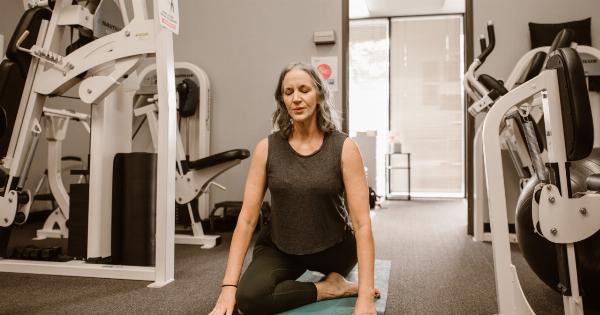Menstrual pain, also known as dysmenorrhea, is a common condition that affects many women during their reproductive years.
This pain is typically experienced in the lower abdomen and can range from mild discomfort to severe cramping, often accompanied by other symptoms such as headaches, nausea, and fatigue. While menstrual pain is a normal part of the menstrual cycle for many women, it can sometimes be extremely bothersome and interfere with daily activities.
In this ultimate guide, we will explore various effective ways to reduce and alleviate menstrual pain, allowing you to have a more comfortable and pain-free period.
Understanding Menstrual Pain: Primary vs. Secondary Dysmenorrhea
Before diving into solutions, it is important to understand the two main types of menstrual pain: primary and secondary dysmenorrhea.
Primary dysmenorrhea refers to menstrual pain that is not caused by any underlying medical condition. It is typically caused by the release of prostaglandins, hormone-like substances that trigger uterine muscle contractions, leading to cramps and pain.
Primary dysmenorrhea usually begins within a few years of a woman’s first period and gets better as she ages.
Secondary dysmenorrhea, on the other hand, is menstrual pain that is a result of an underlying medical condition such as endometriosis, fibroids, or pelvic inflammatory disease (PID).
The pain experienced in secondary dysmenorrhea is often more severe and may worsen over time. If you suspect you have secondary dysmenorrhea, it is essential to see a healthcare professional for proper diagnosis and treatment.
Maintaining a Healthy Lifestyle for Menstrual Pain Relief
A healthy lifestyle can have a significant impact on reducing menstrual pain. Here are some key lifestyle changes and practices to consider:.
1. Eating a Nutritious Diet
Consuming a well-balanced diet rich in essential nutrients can help minimize menstrual pain. Include plenty of fruits, vegetables, whole grains, and lean proteins in your meals.
Additionally, certain foods have anti-inflammatory properties that can help alleviate pain, such as fatty fish, nuts, seeds, and turmeric.
2. Staying Hydrated
Drinking an adequate amount of water is crucial for overall health and can also help reduce menstrual pain. Proper hydration keeps your body functioning optimally and can help ease cramping and bloating.
3. Regular Exercise
Engaging in regular physical activity has numerous benefits, including the reduction of menstrual pain. Exercise releases endorphins, which act as natural painkillers and mood boosters.
Aim for at least 30 minutes of moderate exercise most days of the week.
4. Stress Management
Stress can exacerbate menstrual pain. Explore stress management techniques such as meditation, deep breathing exercises, yoga, or tai chi to promote relaxation and alleviate pain symptoms.
Effective Home Remedies for Menstrual Pain Relief
1. Heat Therapy
Applying heat to the lower abdomen can provide significant relief from menstrual pain. Use a heating pad, warm water bottle, or take a warm bath to soothe cramps and relax tense muscles.
2. Herbal Teas
Certain herbal teas, such as chamomile, ginger, peppermint, and cinnamon, have natural anti-inflammatory and antispasmodic properties. Sipping on these teas during your period can help reduce pain and discomfort.
3. Dietary Supplements
Several dietary supplements can be beneficial in reducing menstrual pain. These include omega-3 fatty acids, magnesium, calcium, and vitamin E. Consult with a healthcare professional before starting any new supplements.
4. Acupuncture
Acupuncture, an ancient Chinese practice, involves the insertion of thin needles into specific points of the body. It can help alleviate menstrual pain by promoting blood flow, reducing inflammation, and releasing endorphins.
Medical Interventions for Menstrual Pain Relief
1. Nonsteroidal Anti-Inflammatory Drugs (NSAIDs)
NSAIDs, such as ibuprofen or naproxen sodium, are commonly used to relieve menstrual pain. These over-the-counter medications reduce inflammation and alleviate cramps.
2. Birth Control Pills
Oral contraceptives can be an effective treatment for reducing menstrual pain. They work by regulating hormone levels, reducing the release of prostaglandins, and thinning the uterine lining.
3. Transcutaneous Electrical Nerve Stimulation (TENS)
TENS devices deliver low-voltage electrical impulses to specific areas of the body. Applying TENS therapy to the lower abdomen can help alleviate menstrual pain by stimulating nerves and blocking pain signals.
4. Pelvic Floor Physical Therapy
For women with severe menstrual pain caused by conditions like endometriosis, pelvic floor physical therapy can provide significant relief.
Therapists use various techniques, such as stretching exercises, myofascial release, and relaxation techniques, to alleviate pain and improve pelvic muscle function.
When to Seek Medical Advice
In most cases, menstrual pain can be effectively managed with lifestyle changes and home remedies. However, it is important to consult with a healthcare professional if:.
- The pain is severe and significantly impacts your daily activities
- You experience heavy or prolonged menstrual bleeding
- You have irregular periods or suspect an underlying medical condition
A healthcare provider can help diagnose any underlying conditions and recommend appropriate treatment options.
Conclusion
Menstrual pain is a common occurrence for many women, but it doesn’t have to be an inevitable burden.
By making certain lifestyle changes, trying effective home remedies, and considering medical interventions when necessary, you can significantly reduce and manage menstrual pain. Remember, everyone’s experience with menstruation is unique, so it may take some exploration to find the best combination of methods that work for you.
Embrace self-care, listen to your body, and seek medical advice when needed, and you’ll be on your way to a more comfortable and pain-free period.






























